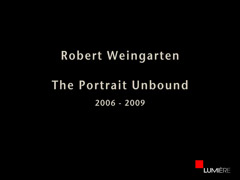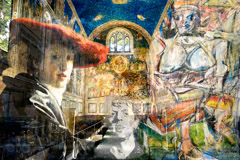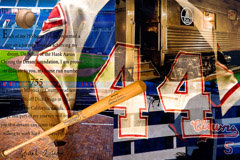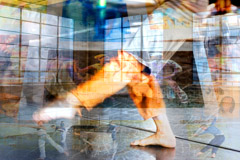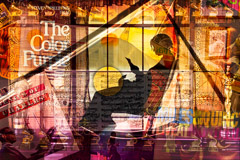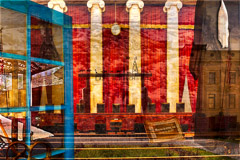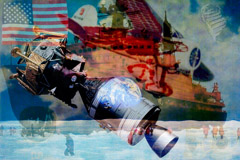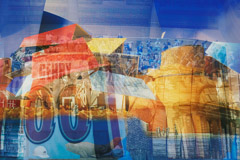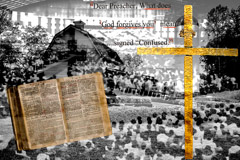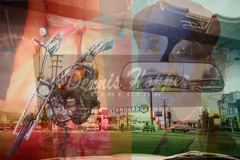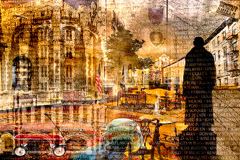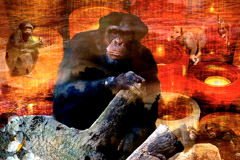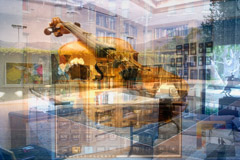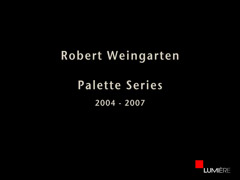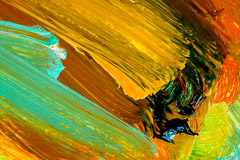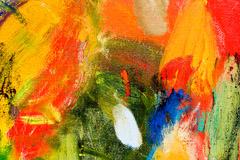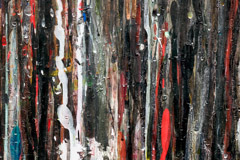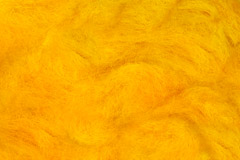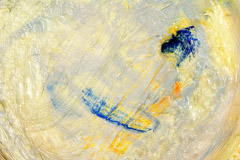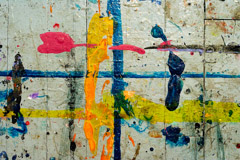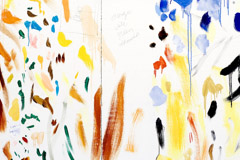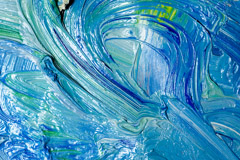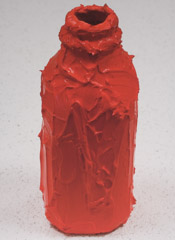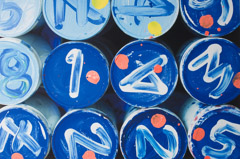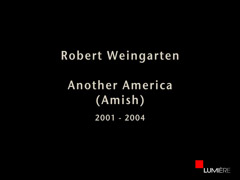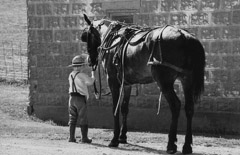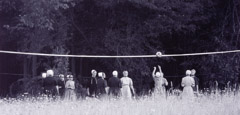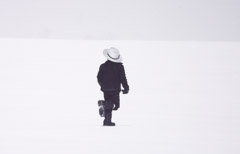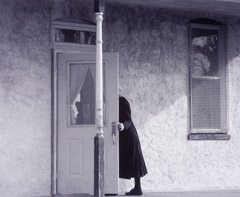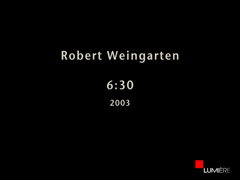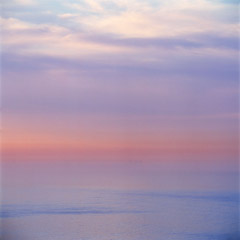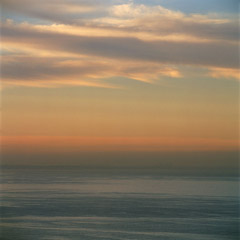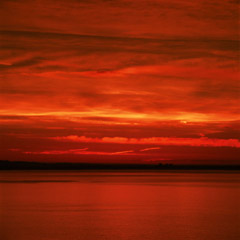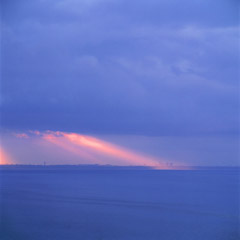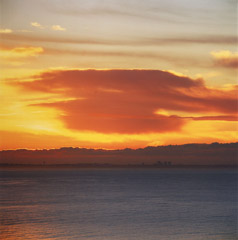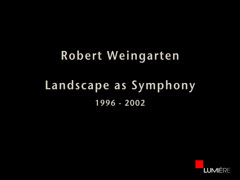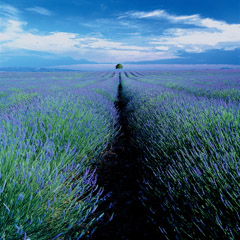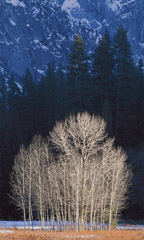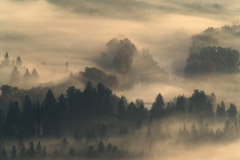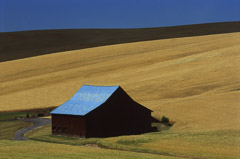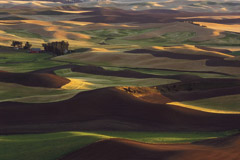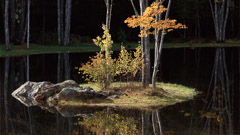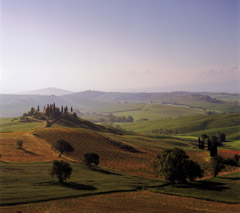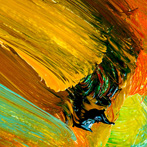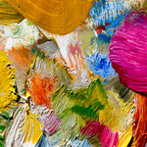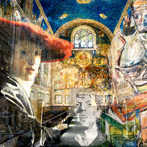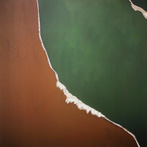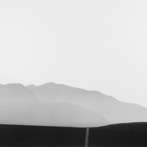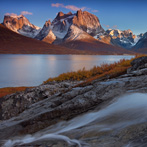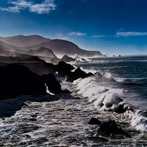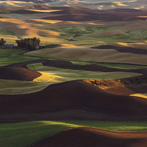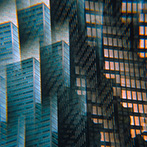Robert Weingarten
Robert Weingarten (1941) At the age of 54 he decided to become fully committed to his photographic art. His Landscapes often showcase repetitive natural form and magnificent hues. The 6:30 AM series, for which Weingarten photographed the same view during the year 2003 from his home in Malibu, Calif., is a perfect example of this style. The 6:30 AM series was featured in a 2005 book of the same title, published by Hatje Cantz, which was Weingarten’s third photography book in two years. The series displays his ability to evoke a sense of natural superiority reminiscent of the Hudson River School painters while exhibiting an Impressionistic sensibility.
Weingarten’s work has been featured in more than 80 exhibitions worldwide, most of them solo exhibitions. He has earned the distinction Fellow of the Royal Photographic Society (FRPS) Bath, England, and his images are in the permanent collections of 30 museums, including the J. Paul Getty Museum, Metropolitan Museum of Art, Los Angeles County Museum of Art, Museum of Fine Arts (Houston), Whitney Museum of American Arts, Corcoran Gallery of Art, Smithsonian Institution, National Gallery of Australia, George Eastman House International Museum of Photography and Film, and the High Museum of Art. Numerous exhibitions in the United States and Europe have been complemented by six books of his photographs.
The work of Robert Weingarten is featured in these exhibitions.
(Select the image to view the exhibition page)
The work of Robert Weingarten is featured in these Theme Collections.
(Select the image to view the theme page)
Robert Weingarten - Exhibition - George Eastman House
February 22 – May 25, 2014
We are pleased to pass along information on the exhibition- Another America: A Testimonial to the Amish by Robert Weingarten at the George Eastman House, in Rochester New York. Weingarten spent four years photographing Amish communities in Indiana, Iowa, Ohio, Pennsylvania, Tennessee, and Wisconsin. The culmination of this work is Another America: A Testimonial to the Amish, on view from February 22 through May 25 in the Brackett Clark Gallery. Mostly black-and-white, Weingarten’s exquisitely composed photographs depict aspects of everyday Amish life—children at play, horse-drawn carriages, laundry on clotheslines—along with pastoral scenes and simple compositions of Amish architecture.
An artist talk will take place on Thursday,
May 1,2014 – 6 pm in the Dryden Theatre.
View The George Eastman House’s web site for additional details.
More information on Bob’s work can be found on his Lumière artist page
As well as the exhibition: The Road Less Traveled.
Pushing Boundaries: Portraits by Robert Weingarten
Smithsonian – National Museum of American History
Kenneth E. Behring Center – Washington DC
July 2, 2012 – October 14, 2012
International Gallery, S. Dillon Ripley Center, Third Level
This work was featured in the Lumière exhibition:
Robert Weingarten: The Road Less Traveled.
Pushing Boundaries: Portraits by Robert Weingarten presented 15 of Weingarten’s digital composite portraits of iconic Americans including Sandra Day O’Connor, Hank Aaron, and Chuck Close. In addition, there are more than two dozen portraits by other photographers from the Photographic History Collection to provide context about the long history of combination printing and portraiture.
0:45 – video length
Robert Weingarten’s artist page
Weingarten Portrait of Dennis Hopper
Who was Dennis Hopper? (1936-2010)
By: Shannon Perich, Associate Curator for the Photographic History Collection
at the National Museum of American History.
Original Post 6/1/2010 on the Smithsonian, National Museum of American History, Blog
In May of 2010 the iconic actor and member of the counter culture Dennis Hopper passed away. In 2006, Robert Weingarten had the opportunity to work with Hopper. Weingarten, a California based photographer interested in the line between biography and portraiture asks his famous subjects, “What makes you who you are?” Weingarten proposes that “who we are,” is not the physical self that changes over time, but our passions, mottos we live by, memories, experiences, and contributions.
The resulting image, part of the Smithsonian, National Museum of American History, Photographic History Collection, is a translucent composite made with Weingarten’s digital photographs.

The images are based on the list Hopper made describing himself, which acknowledges his influence on American culture and his personal passions.
- The director’s chair with his name on it as a reference to the movies he has directed.
- The mural based on Hopper’s photograph, “Double Standard” and his camera indicate his work as a photographer.
- The painting of the woman is one made by Hopper, the artist.
- The Andy Warhol painting of Mao references his modern art collection. The two bullet holes in the painting were created when he “shot Mao” during a drug induced rage.
- There are his golf clubs and a cigar.
- And, of course, the iconic motorcycle, “Easy Rider.”
Over time additional remembrances of Hopper will be written, but Weingarten’s photograph gives us Hopper’s last word on how he defined himself.
Robert Weingarten - on WABE City Cafe
The Road Less Traveled was exhibitied at Lumière in 2010.
This link will take you to an interview by John Lemley from WABE. On January 20th he spoke with Robert Weingarten about his exhibition The Portrait Unbound which debuted at the High Museum in January 2010.
Robert Weingarten - Gallery Talk (video conference)
Saturday February 20, 2010
Lumière
425 Peachtree Hills Ave.
Bob Weingarten joined us via video conference from his studio in Los Angeles. He provided insight into his career and discussed his retrospective exhibition The Road Less Traveled. Bob also conducted a video tour of his studio and engaged in a lively Q & A session with the audience covering many aspects of his artistic journey through his diverse body of work.
Robert Weingarten: In My Minds Eye
November 1, 2007
Atlanta History Center
This acclaimed master photographer discussed his work from representational to abstractions. His contemporary Corcoran Gallery of Art Palette Series, black and white Amish images, French and Italian landscapes and Malibu light studies were all discussed.

